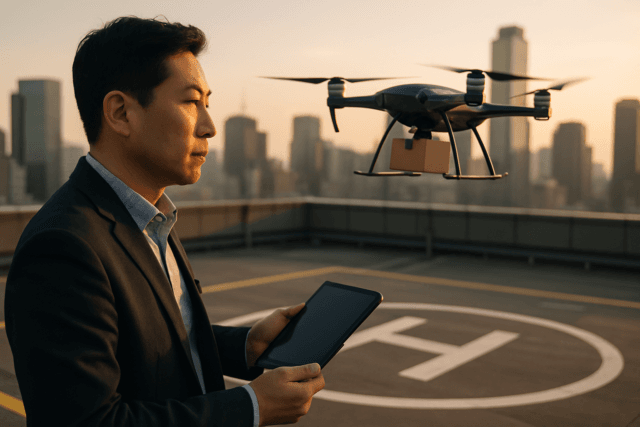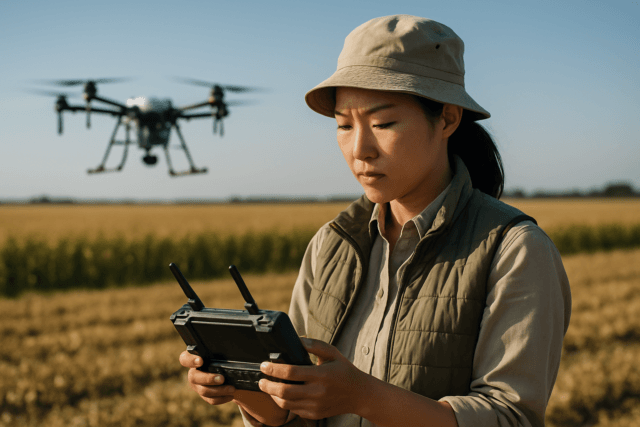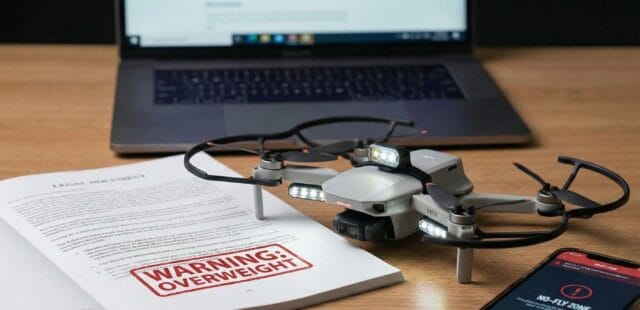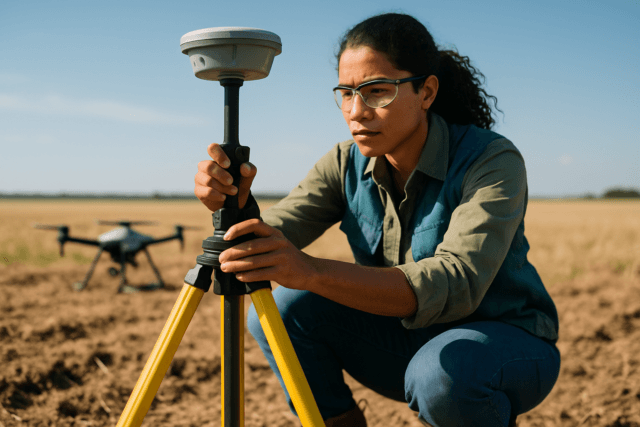In the complex and often hazardous world of industrial facilities, traditional mapping methods can be time-consuming, expensive, and pose significant safety risks to personnel. Imagine the challenge of accurately surveying a vast refinery, a sprawling manufacturing plant, or an intricate power station with conventional ground-based techniques. The demand for precise, up-to-date, and safe mapping solutions has never been greater, and Unmanned Aerial Systems (UAS), commonly known as drones, are emerging as the transformative technology to meet this need. Drones equipped with advanced sensors and sophisticated software are revolutionizing how industrial sites are mapped, offering unprecedented detail, efficiency, and safety.
The Unmatched Advantages of Drone-Based Industrial Mapping
The adoption of drones for surveying and mapping industrial facilities brings a multitude of benefits that far surpass traditional methods:
Enhanced Safety and Risk Reduction
Industrial environments often involve hazardous areas, heavy machinery, complex structures, and elevated spaces, making manual inspections and surveying dangerous. Drones can access these difficult-to-reach or unsafe locations without putting human workers at risk, significantly improving job site safety and ensuring compliance with safety regulations. This capability is particularly valuable for inspecting pipelines, oil rigs, and chemical processing equipment.
Superior Speed and Efficiency
Drones can cover vast areas quickly, collecting data in a fraction of the time it would take traditional ground-based methods. This rapid data acquisition allows for quicker decision-making and project adaptation, ultimately saving time and resources. Large-scale industrial asset management projects have seen significant reductions in time and cost compared to previous methods.
Unparalleled Accuracy and Detail
Equipped with high-resolution cameras, LiDAR sensors, and GPS technology, drones capture incredibly detailed aerial images and data. This high-quality input enables the creation of precise 2D and 3D maps, digital surface models, digital terrain models, and orthomosaics that accurately represent site features and topography with centimeter-level accuracy.
Cost-Effectiveness
While there’s an initial investment in equipment and training, drones provide a cost-effective solution in the long run by reducing labor costs, equipment expenses, and minimizing project downtime. The ability to collect comprehensive data quickly also translates into savings throughout a project’s lifecycle.
Comprehensive Data and Insights
Drone mapping provides a rich dataset that offers a comprehensive overview of operations. This data can be processed into various outputs, offering valuable insights for project planning, progress monitoring, and facility management. Regular aerial surveys can track construction progress, identify potential issues early, and ensure projects stay on schedule and within budget.
The Process: From Flight to Detailed Map
Creating detailed maps of industrial facilities with drones involves several key stages:
Flight Planning and Data Acquisition
The process begins with careful flight planning. This involves defining the area of interest, setting flight paths, and determining the appropriate altitude and overlap for image capture. Drones are typically programmed to fly autonomously along pre-programmed routes, ensuring consistent data collection. High-resolution cameras capture a series of overlapping 2D images, while LiDAR sensors can gather millions of 3D data points. For projects requiring high levels of global accuracy, ground control points (GCPs) are often used to provide additional information for mapping programs.
Photogrammetry and Data Processing
Once images are captured, specialized photogrammetry software is used to process the data. This software identifies common points across multiple overlapping images and stitches them together, along with their geolocation data, to create accurate three-dimensional terrain models, orthomosaic maps, and dense “point clouds.” LiDAR data also generates precise point clouds, particularly effective for penetrating vegetation to map ground surfaces. Advanced software solutions like Pix4D and DroneDeploy are widely used for this purpose.
Generating Deliverables and 3D Models
The processed data is then used to generate a variety of detailed deliverables:
- Orthomosaic Maps: Georeferenced images where distortions are corrected, making them true to scale, useful for visualizing building sites and tracking progress.
- 3D Models: Realistic visual representations of an area or object, complete with textures derived from photos. These are invaluable for urban planning, construction, and asset management.
- Point Clouds: A collection of data points representing the 3D geometry of the scanned area, which can be imported into 3D review tools and compared to existing designs to identify inconsistencies.
- Digital Elevation Models (DEMs) and Digital Surface Models (DSMs): Representing the bare earth and surface features, respectively, crucial for topographical analysis and volume calculations.
- Digital Twins: Integration of drone data can contribute to creating and updating digital twins of facilities, offering a real-time, comprehensive virtual replica for ongoing management and analysis.
Diverse Applications in Industrial Facilities
Drone mapping offers solutions across various industrial sectors:
Construction and Infrastructure
In construction, drones are used for site planning, progress monitoring, and inspecting structures for maintenance and safety. They help track excavation, validate designs against as-built conditions, manage stockpiles, and document underground utilities before they are covered. For infrastructure, drones are used for surveying roads, utilities, power lines, and public infrastructure.
Oil, Gas, and Energy
Drones are vital for pipeline inspections, monitoring oil rigs, assessing terrain suitability for energy plants, and inspecting electrical substations for asset management and remote inspections. They can also document vegetation encroachment along power lines.
Mining and Quarries
For mining operations, drone photogrammetry generates detailed digital surface models and 3D models, allowing for accurate volume calculations of stockpiles and excavated areas. This aids in inventory management, production tracking, and monitoring dam shapes for safety compliance.
Facility and Asset Management
Beyond construction, drones provide up-to-date digital records for efficient inspections and long-term facility management. This includes internal warehouse mapping for inventory management, ensuring every slot is precisely recorded for automated systems.
Navigating Challenges and Regulations
While the benefits are clear, implementing drone mapping in industrial settings comes with considerations:
Regulatory Compliance
Drone operations are subject to regulations that vary by country and region. In the U.S., commercial drone operators need a Remote Pilot Certificate under FAA Part 107. Regulations cover aspects like drone registration, pilot certification, flight restrictions (e.g., maximum altitude of 400 feet, maintaining visual line of sight), and operating in controlled airspace, often requiring waivers like LAANC authorization. Outside the U.S., regulations like the UK Civil Aviation Authority’s rules also dictate safe flying distances from industrial sites. Non-compliance can lead to significant penalties.
Technical Limitations and Site Conditions
Challenges can include limited flight times due to battery life, especially for large sites requiring multiple flights. Weather conditions such as wind, rain, and extreme temperatures can affect sensor calibration and data quality. Complex terrain, dense vegetation, or urban landscapes with obstructions can complicate data capture and the placement of ground control points.
Data Processing and Expertise
Processing the large volumes of data captured by drones requires advanced software and specialized expertise in photogrammetry and GIS. The accuracy of the final maps depends heavily on the quality of data processing and the skill of the operators.
The Future of Industrial Mapping
The use of drones for creating detailed maps of industrial facilities is an evolving field. With advancements in drone technology, sensor capabilities (such as LiDAR and thermal imaging), and AI-powered data analytics, the precision, efficiency, and safety offered by UAS will continue to grow. Drones are not replacing traditional surveying entirely but are enhancing existing methods, providing a powerful tool for informed decision-making across the industrial landscape. As regulations mature and technology becomes even more accessible, drones will become an indispensable component of industrial operations, driving greater efficiency, safety, and operational intelligence.





